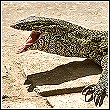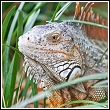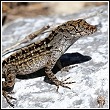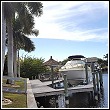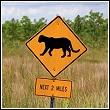Cape Coral Lizard Removal
Lizards In Cape Coral
The Cape Coral canal habitat gives lizards everything they need - plenty of food to eat, lots of vegetation to hide in, and plenty of fresh water.
There are about ten native species of lizards found in and around Cape Coral, and several other non-native and invading species that have established a foothold in the area in recent years.
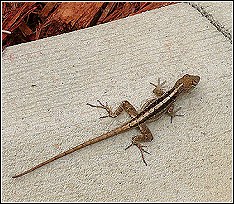
Exploring A Cape Coral Driveway
Many of the non-native species are considered invasive because they are creating problems within the habitat they have adopted. Smaller invasive lizards, like the brown anole shown above, can be a nuisance for home owners, but they can also pose a threat to the area's eco-system, potentially threatening the existence of native species. Larger non-invasive species such as the green iguana, black spiny tailed iguana, Tegu and the Nile monitor also disrupt balance in the eco-system, and they become both a nuisance and a danger when they dig burrows, destroy vegetation and threaten pets and residents.
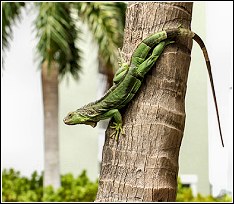
Suburban Cape Coral Neighborhood
The Nile monitor, like the one seen in the photo immediately below, is an invasive species from Africa which can reach up to 7' in length. It is becoming more and more of a problem for Cape Coral residents. There are believed to be hundreds, possibly as many as 1000 Nile monitors in the Cape Coral area. Nile monitors hunt by day and pose a real threat to pets, dogs and cats. Smaller wildlife in the area, such as burrowing owls, young alligators and gopher tortoises are also at risk.
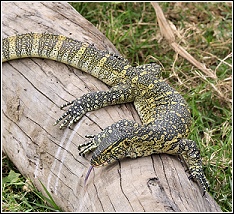
Believed To Be Living In Cape Coral
Nile monitors can bite, are hazardous and should only be trapped and handled by a knowledgeable professional. Their saliva can be potentially fatal and if bitten you should seek medical help immediately.
Monitors live in ground burrows, usually close to canals, and spend much of their time in the water or basking in the sun. The city has published a map showing Nile monitor sightings and captures in the area.
Iguanas are sometimes mistaken for Nile monitors and vice versa.
The green and black spiny iguana, are two of several exotic animals that can be found throughout the Cape Coral region.
But not to worry, we can help you with all of your Cape Coral iguana problems, including iguana removal, prevention and exclusion too.
The Tegu, seen immediately below, is another invasive lizard species creating problems in the Cape Coral area. Tegu lizards are still relatively low in number in the area but there are concerns their numbers are on the rise. The problems with the Tegu are similar to those caused by the iguana and Nile monitor - eating bird eggs, destroying landscaping, eating agricultural crops, preying on and threatening natural native species, and presenting an overall hazard to people and pets.
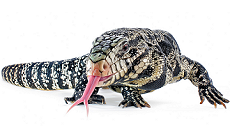
It can be assumed that just about all of the these invasive species got their start in the area after starting out as pets, only to escape into wild or be released by an unhappy pet owner.
And last but not least, there are the seemingly harmless smaller lizards, such as the common brown house gecko. However, even seemingly harmless lizards can become a nuisance. And when they do, we can help, the Wildlife Whisperer will know just what to do.
1242 SW Pine Island Rd., Suite 310
Cape Coral, Florida 33991-2126
help@totalwildlifecontrol.com



